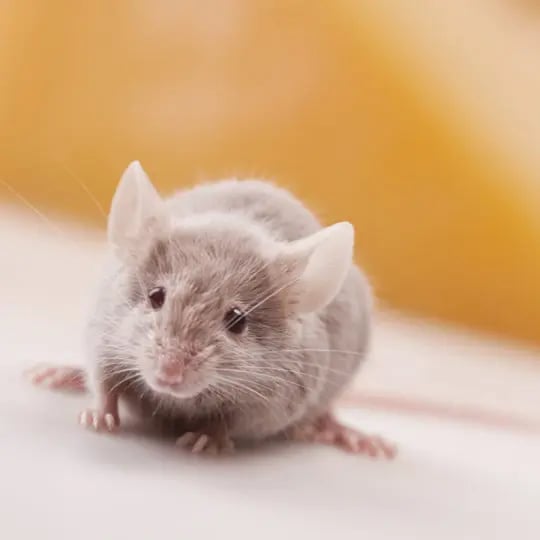
Scientific Name: Mus musculus
Lifespan: 1 to 3 years
Problem: Disease, property destruction
The house mouse (Mus musculus) is one of the most common rodent pests, and is thought to have been the motivation for the domestication of cats. Along with chewing furniture to keep its incisors sharp and ransacking food supplies, house mice are potential vectors of various deadly diseases including murine typhus and the bubonic plague. Find out more about this household pest to help you keep your house mouse-free.
The House Mouse Life Cycle
- Babies – House mouse babies or “pups” are born furless, blind and (somewhat unusually) earless. On average, there will be about 6-8 mouse pups to a litter. Female house mice will give birth to 5-10 litters per year.
- Juveniles – After about 3 weeks, the pups are weaned from their mothers. They remain unable to reproduce for 5 weeks after being weaned.
- Mature Animals – Mature house mice are 7.5-10 cm in length. In the wild, they vary in color from a drab light brown to dark brown. They have longer, pointier noses than some mice, small, round ears and mostly-bald tails.
House Mouse Habitats and Habits
House mice mainly live, as their name suggests, where humans do. When house mice do live in the wild, they are referred to as “noncommensal” house mice, are more aggressive, and reproduce more slowly. When living in close proximity to humans, they are referred to as “commensal” house mice, and reproduce more quickly, even engaging in group nursing of young.
Like most mice, house mice are mainly active at night. When house mice are moving, they run on all fours, only rearing up when they pause to eat, fight or look around them. They prefer to run and walk next to vertical surfaces such as walls for protection.
How to Recognize and Get Rid of a House Mouse Infestation
House mouse infestations are recognizable by a few different characteristics, including the nests they make for themselves (usually in walls and within insulation), the marks they leave on the floor (urine trails and grease stains), mouse droppings (3-6 mm, dark, with pointed ends), and, if you have a large infestation, a musky odor in the house.
To keep house mice from moving in, remove available food and water supplies by covering pet food, keeping dishes clean, and consider removing any birdfeeders from your property, as they dispense seeds that mice love to eat. You should also caulk any holes you find in your home where mice may be entering. If you prevent easy access to your home, house mice cannot get in. Once house mice have invaded your home, you may need to use a rodent control service.
Need Help with House Mice in Home | Philadelphia Mice Extermination?
Call today at and let's talk about how we can help you with House Mice in Home | Philadelphia Mice Extermination and other Pest Library.